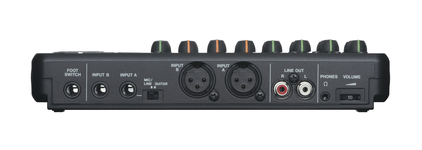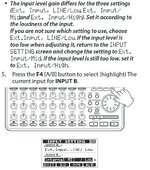I really appreciate that explanation, I was never any good with the technical side. Lack of outboard gear means I've never had to worry too much. I kind of had the 1meg impedance for guitar in my thoughts, and there is something about making sure it is either at least 10x greater or smaller when plugging something new in but apart from that I am completely clueless. It helps a lot with what you wrote though.
I took this from my User manual of the little ArtTube I have.
"¼" INPUT JACK
The ¼" Input jack is for instrument and line level inputs. It has a high
input impedance to minimize any loading effects on instrument
pickups. It can also handle up to +22 dBu signals for line level signals"
I was wrong, it was not Mic/Line that was interchangeable, it was Inst/Line. But still... I wouldn't have thought you could just plug a guitar for eg: straight into a line input on an interface and record away happily? This is what is confusing me..... There is no switch or setting that I am aware of that changes the impedance of that input to tell the interface that it is either an Instrument, or Line level source plugged in.
Reason I am looking into this now is because I want to have a go re-amping today, throught the ARTTubeMP V3, I want to see if I can add some warmth/thickness to all of my tracks as a quick experiment, and then see which mix I prefer. So I was thinking each of my tracks routed out of the DAW, into my Re-amping box which converts from Line>Inst, and then straight into the ART and back through into the RadialJDI (which is expecting to see a Line level input or Inst level I am assuming?) But again.... this confuses me because am I outputting a mic level signal from the JDI? If I am then, in the past I was clipping the crap out of the interface even with the pre-amps down to the minimum so I had to use the Line-In, or engage the PAD on the mic input on the interface? I'm just not sure if I am degrading the signal or messing up something seriously in the chain? I had a really hot level going into the Radial JDI, but this was intentional.
No worries if you don't answer my weird little experiment, I am kinda highjacking the thread a little bit here anyway
EDIT:
The instructions are confusing me!
"OPERATION
The main application of the Tube MP Studio V3™ is a microphone
preamplifier. Plug any microphone directly into either input and set the
input and output controls to provide an appropriate level into the next
stage of your system.
Use the Tube MP Studio V3™ as an acoustic or piezo pickup
preamplifier to run directly into a console, amp, processor, recorder, or
sound card.
The Tube MP Studio V3™ is ideal for use as a DI box. Plug the
instrument into either input and use the XLR or ¼" (or both) outputs to
connect to your recorder, board or PA system.
Because of its low noise and excellent tonal qualities, the Tube MP
Studio V3™ is ideal for running mixes through before recording to DAT
or cassette. Used as a mastering device, the Tube MP Studio V3™ is
capable of adding warmth and gentle tube compression to the signal.
Variable Input and Output level controls make the Tube MP Studio
V3™ ideal for level matching material in postproduction situations."
It says to plug a microphone into any input, or an instrument into any input? does it not matter? (I am sure it does, pluggin a mic into a socket that is expecting to see inst, or Linein level can't be right! I am more willing to believe the instructions are wrong) But just wanted to clarify.....




